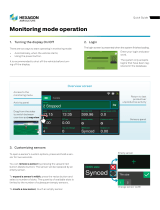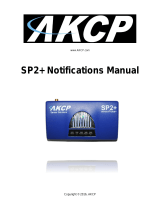
Page 5
877-877-2269 | blackbox.com
EME149A-20
Table of Contents
Table of Contents
1. Specifications .......................................................................................................................................................................................... 6
2. Overview ............................................................................................................................................................................................ 7
2.1 Introduction .................................................................................................................................................................................... 7
2.2 What‘s Included .............................................................................................................................................................................. 7
2.3 Hardware Description ..................................................................................................................................................................... 8
2.3.1 EME149A-20 Front Panel ...................................................................................................................................................... 8
2.3.2 EME149A-20 Back Panel ....................................................................................................................................................... 9
2.3.3 EME149A-60 Front Panel .....................................................................................................................................................10
2.3.4 EME149A-60 Back Panel .....................................................................................................................................................11
2.3.5 EME149D-20 Front Panel .....................................................................................................................................................12
2.3.6 EME149D-20 Back Panel ......................................................................................................................................................13
2.3.7 EME149D-60 Front Panel.....................................................................................................................................................14
2.3.8 EME149D-60 Back Panel .....................................................................................................................................................15
2.4 ServSensor with 20 or 60 Extra Dry Contact Inputs, VAC, or VDC ..................................................................................................16
2.4.1 Extra Dry Contact Input Practical Applications .....................................................................................................................16
2.4.2 ServSensor with 20 or 60 Extra Dry Contact Web Interface Setup .......................................................................................17
3. Installation .......................................................................................................................................................................................... 20
3.1 Setting the IP Address ................................................................................................................................................................... 20
3.2 Testing the New IP Address with the “Ping” Command ................................................................................................................ 22
3.3 Firmware Upgrade ........................................................................................................................................................................ 23
3.4 Multiusers and Groups Setup ........................................................................................................................................................ 25
3.4.1 Group Setup....................................................................................................................................................................... 25
3.4.2 User Setup ......................................................................................................................................................................... 28
3.5 Services and Security .................................................................................................................................................................... 30
3.5.1 Active Services Application (Disabling)................................................................................................................................ 30
3.5.2 Closing or Changing Ports Disabling HTTP and Enabling HTTPS .......................................................................................... 31
3.5.3 The SNMPv3 SSL Security Feature ....................................................................................................................................... 32
3.5.4 Active Security ................................................................................................................................................................... 33
3.5.5 The NAC or Network Access Control Security Feature ........................................................................................................ 34
3.6 Setting Up a Sensor ...................................................................................................................................................................... 34
3.6.1 Notification Thresholds ....................................................................................................................................................... 36
3.6.2 Advanced Sensor Settings .................................................................................................................................................. 38
3.7 Using an Internal Mic as a Sound Detection Sensor ....................................................................................................................... 46
3.8 Expansion Ports ............................................................................................................................................................................ 49
4. Notifications .......................................................................................................................................................................................... 52
4.1 Adding a Notification .................................................................................................................................................................... 52
4.2 SNMP Trap .................................................................................................................................................................................... 53
4.3 E-mail .......................................................................................................................................................................................... 57
4.4 SMS Notification ........................................................................................................................................................................... 62
5. Mapping .......................................................................................................................................................................................... 68
5.1 Adding a Map .............................................................................................................................................................................. 68
5.2 Monitoring via the Map Interface .................................................................................................................................................. 72
6. Filters .......................................................................................................................................................................................... 73
6.1 Sensor Filters ................................................................................................................................................................................ 73
6.2 Syslog Filters ..................................................................................................................................................................................74
7. Making the ServSensor Visible to the Internet ....................................................................................................................................... 77
8. SEC to SEC SNMP Trap Receive ............................................................................................................................................................. 78
8.1 Introduction .................................................................................................................................................................................. 78
8.2 SNMP Trap Sender (A) SEC (10.1.1.225) configuration ................................................................................................................... 78
8.3 Getting OIDs for the SNMP Traps .................................................................................................................................................. 84
8.4 SNMP Trap Receiver (B) SEC (10.1.1.137) configuration .................................................................................................................. 89
9. SNMP Trap Receiver Controlling IO-digital8 Relay .................................................................................................................................. 94
10. Frequently Asked Questions (FAQs) ......................................................................................................................................................103
Appendix A: Black Box Open Source Software License Disclaimer .............................................................................................................. 111
A. Licensing Information ...................................................................................................................................................................... 111
B. GNU GPL v2 ..................................................................................................................................................................................... 111
C. GNU GPL v3 .....................................................................................................................................................................................116
D. GNU LGPL v2.1 ................................................................................................................................................................................124
E. BSD and BSD like Licenses ................................................................................................................................................................130
F. Other Licenses ..................................................................................................................................................................................131





















